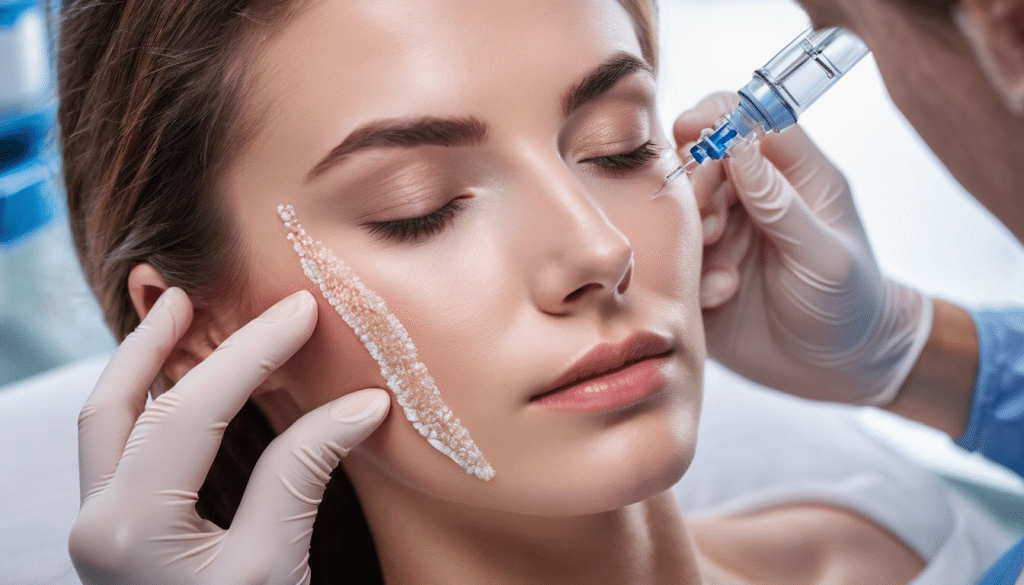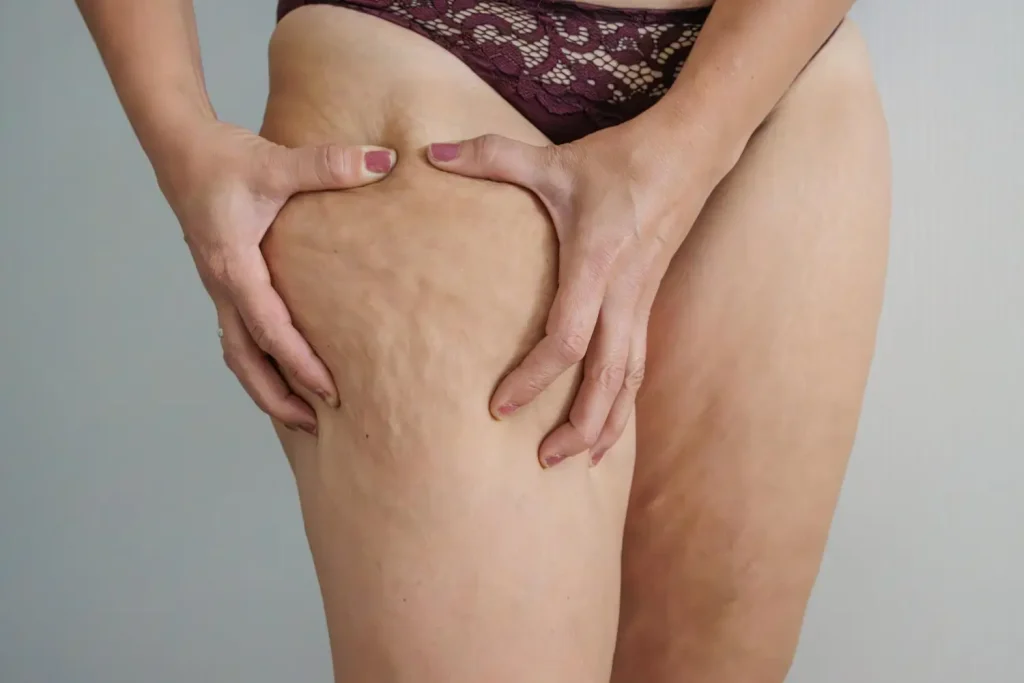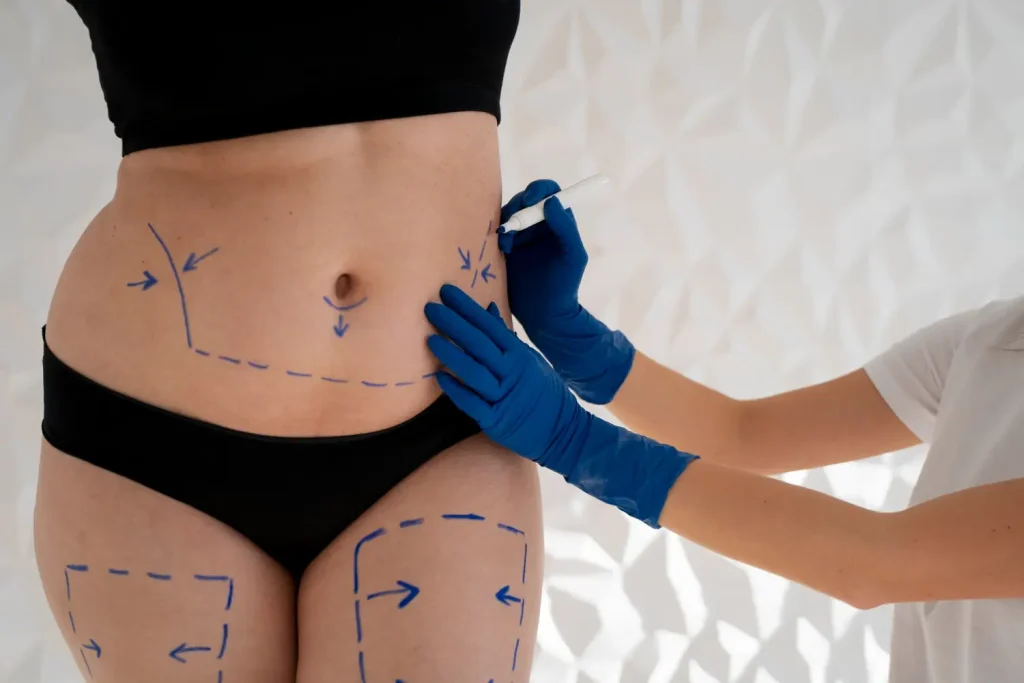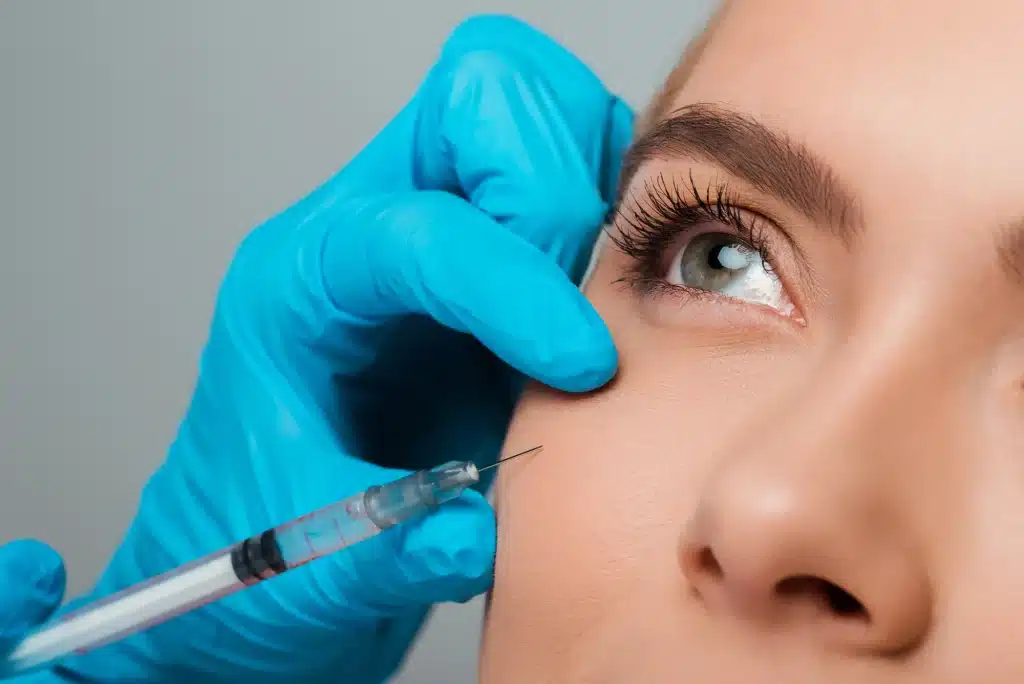In the evolving landscape of non-surgical aesthetic procedures, there’s a notable uptick in demand for dermal fillers, exemplified by the popularity of options like Aliaxin. This surge prompts a closer examination of the factors shaping the longevity and efficacy of Aliaxin filler.
This article navigates through injection techniques, explores the impact of patient physiology and lifestyle choices, and dissects the unique formulation of Aliaxin. Designed for both seasoned practitioners and those considering dermal fillers, the insights here empower informed decisions and enhance satisfaction with Aliaxin treatments.
We uncover the secrets of injection techniques, scrutinize lifestyle factors influencing filler longevity, and examine Aliaxin’s distinctive formulation. Additionally, we present strategies for optimizing and prolonging results, offering valuable knowledge for those seeking a deeper understanding of Aliaxin filler treatments.
Key Takeaways
- Expert injection technique is critical for Aliaxin filler longevity, requiring practitioners to be skilled in determining the correct depth and volume of injections.
- A patient’s metabolism, skin type, and lifestyle choices such as smoking or sun exposure can impact how long the effects of Aliaxin fillers last on their skin.
- Sun protection plays a vital role after treatment with Aliaxin fillers; patients should use broad-spectrum sunscreen and avoid excessive sun to maintain results.
- The unique formulation of Aliaxin, consisting of hyaluronic acid with monophasic molecular weights, contributes to its effectiveness and duration compared to other dermal fillers.
Injection Technique and Expertise

Proper injection technique and practitioner expertise play a crucial role in the longevity of Aliaxin filler. The depth and volume of injection, as well as the skill of the practitioner, can significantly impact the results achieved with Aliaxin dermal filler.
Importance of proper injection technique
The longevity of Aliaxin filler is intricately tied to the mastery of injection technique. Practitioners must exhibit skill in determining the correct depth and volume of injections for safe and aesthetically pleasing results.
Understanding facial anatomy and precise targeting of depth minimizes risks, ensuring natural-looking outcomes and long-term satisfaction.
Impact of practitioner expertise on filler longevity
The expertise of the practitioner is a vital factor in determining how long the effects of Aliaxin filler will last. A skilled practitioner strategically places the filler for natural-looking longevity, while an inexperienced hand may compromise both effectiveness and duration.
Tailoring solutions to individual patients based on factors like skin type and facial structure ensures quality care and contributes significantly to the overall lifespan of dermal fillers.
How injection depth and volume affect results
Injecting Aliaxin filler at the correct depth is crucial for achieving desired outcomes and enhancing its longevity. Superficial injections may provide immediate plumpness, but deeper layers preserve the volumizing effect longer.
Precision in injection techniques, coupled with careful measurement of filler volume, allows for tailored aesthetic enhancements and sustained benefits, ultimately affecting how long Aliaxin filler lasts.
Patient Physiology and Metabolism

Understanding the role of patient physiology and metabolism is crucial in determining the longevity of Aliaxin filler. Factors such as individual metabolism, absorption, and distribution in the body play a significant role in how long the filler lasts.
Influence of individual metabolism on filler breakdown
Individual metabolism plays a significant role in the breakdown of dermal fillers. Those with a fast metabolic rate experience faster degradation compared to those with a slower rate.
Variability in filler durability suggests a relationship between individual metabolic rates and filler breakdown, impacting the duration of treatment results.
Factors affecting filler absorption and distribution in the body
Patient physiology, including metabolism, influences the absorption and distribution of dermal fillers in the body. Unhealthy habits like smoking and excessive alcohol consumption can affect filler metabolism, potentially leading to faster breakdown.
Different filler substances with varying properties also influence absorption and distribution within the body.
Understanding the role of patient physiology in filler longevity
Patient physiology plays a crucial role in determining the longevity of dermal fillers, including Aliaxin. Faster metabolism tends to lead to shorter longevity, emphasizing its significance in both preventing and assessing potential complications.
Healthcare providers need to consider individual patient physiology when discussing expectations for filler longevity.
Lifestyle Factors and Their Impact on Filler Longevity
Unhealthy Lifestyle Choices
Smoking and excessive alcohol consumption significantly reduce the lifespan of dermal fillers. Smoking has been linked to accelerated breakdown of fillers, impacting their longevity and effectiveness in facial rejuvenation. Patients engaging in regular sun exposure without adequate protection are also at risk of diminishing their filler results due to the effects of UV damage on filler degradation.
Importance of Sun Protection
Proper sun protection is crucial for preserving filler results and extending their longevity. UV radiation can accelerate the breakdown of fillers, leading to diminished effects and potential skin complications. Broad-spectrum sunscreen plays a pivotal role in shielding the skin from harmful UV rays, ensuring continuous sun protection to maintain optimal filler outcomes.
Recommendations for Sun Protection
To maintain the longevity of Aliaxin filler results, patients should apply broad-spectrum sunscreen daily, seek shade during peak UV hours, and reapply sunscreen every two hours. The significance of consistent sun protection practices, even during overcast or winter months, is emphasized to minimize potential damage and support prolonged filler efficacy.
Understanding Aliaxin Filler Formulation and Mode of Action
Composition and Properties of Aliaxin Filler
Aliaxin filler is composed of well-defined molecular weights of hyaluronic acid, offering a monophasic dermal filler product range that delivers enduring results. Its unique formulation contributes to its longevity and effectiveness in restoring volume and contouring facial features.
How Formulation Influences Longevity
The composition and properties of Aliaxin filler play a crucial role in determining its longevity and efficacy. The formulation and cross-linking technologies utilized in hyaluronic acid fillers significantly impact their diffusion pattern within the skin, influencing how long the results last. Aliaxin’s formulation stands out in its monophasic structure with well-defined molecular weights.
Comparing Aliaxin Filler to Other Dermal Fillers
| Dermal Filler | Base Component | Average Longevity | Molecular Weight Variation |
|---|---|---|---|
| Aliaxin | Hyaluronic Acid | 6-12 months | Monophasic, well-defined molecular weights |
| Juvederm | Hyaluronic Acid | 6-12 months | Varying cross-linking densities |
| Restylane | Hyaluronic Acid | 6-18 months | Biphasic, granular texture |
| Radiesse | Calcium Hydroxylapatite | 12-18 months | Microsphere-based composition |
| Sculptra | Poly-L-lactic Acid | Up to 2 years | Biostimulator, collagen promoter |
Mechanism of Action and Tissue Integration
Aliaxin filler interacts with the skin’s structure through a specific mechanism of action, promoting tissue integration for long-lasting results. Understanding how these processes work is crucial for practitioners to optimize and prolong the effects of Aliaxin filler.
Interaction with Skin’s Structure
Aliaxin filler interacts with the skin’s structure through a specific mechanism of action, promoting tissue integration for long-lasting results. The combination of well-defined molecular weights of hyaluronic acid contributes to its stability and long-lasting benefits.
Tissue integration allows Aliaxin to seamlessly blend with the skin’s natural matrix, promoting a smooth and natural appearance.
Process of Tissue Integration
The process of tissue integration involves creating an environment where the filler can interact seamlessly with the existing tissues, promoting stability and longevity. Factors such as viscosity, deformability, and biocompatibility are critical in facilitating optimal tissue integration.
Aliaxin filler’s high tissue integration and stability contribute significantly to maximizing the duration of aesthetic enhancements.
Factors Influencing Tissue Integration
The tissue integration of Aliaxin filler is influenced by factors such as rheological properties, cross-linking degree, and resistance to deformation. Understanding these factors is vital for healthcare professionals aiming to enhance the longevity and stability of Aliaxin filler results.
Individual patient variations in physiology and metabolism also impact tissue integration.
Strategies for Optimizing and Prolonging Aliaxin Filler Results
Combination Approaches
To optimize and prolong Aliaxin filler results, practitioners can combine dermal fillers with other non-surgical treatments like Botox or chemical peels. This combination approach enhances and extends overall results, offering a comprehensive solution to patients seeking prolonged efficacy.
Hydration and Sun Protection
Maintaining hydration and reducing sun exposure are essential strategies for extending the lifespan of fillers. Patients are advised to drink plenty of water, practice good sun protection, and follow specific skincare routines tailored for post-filler care.
Regular Maintenance Treatments
Regular maintenance treatments before the results wear off can extend the life of Botox and filler results. Incorporating retinol into a skincare routine can increase the longevity of dermal fillers, along with emphasizing gentle skincare practices.
Pre-Treatment Assessment and Customization
Before administering Aliaxin filler, a thorough assessment of the patient’s skin condition and individual needs is crucial for achieving optimal results. Customizing treatment plans based on specific requirements can significantly impact the longevity of the filler.
Importance of thorough patient assessment before treatment
Before administering Aliaxin filler, a thorough assessment of the patient’s facial anatomy, skin type, and aesthetic goals is crucial. Understanding individual variations in facial structure and addressing specific concerns allows practitioners to tailor treatments for optimal outcomes, including extended longevity.
Customized Treatment Plans
Customization of treatment plans based on individual patient needs is vital for achieving long-lasting results. A one-size-fits-all approach is not suitable for dermal fillers, and healthcare professionals should consider patient-specific factors to determine the appropriate dosage, injection sites, and overall treatment strategy.
Post-Treatment Care and Maintenance
After receiving Aliaxin filler treatment, it is crucial for patients to adhere to proper post-treatment care and maintenance. This includes following specific skincare routines, avoiding certain activities or products that could affect the longevity of the filler, and attending follow-up appointments as recommended by their healthcare provider.
Patient Education on Aftercare
Patient education on aftercare practices is fundamental for maintaining Aliaxin filler results. Providing clear instructions on post-treatment care, including sun protection, skincare routines, and avoiding certain activities, ensures that patients actively contribute to the longevity of their results.
The Importance of Follow-Up Appointments
Regular follow-up appointments enable practitioners to monitor the longevity of Aliaxin filler results and address any concerns promptly. Through these appointments, adjustments can be made if necessary, ensuring ongoing patient satisfaction and enhancing the overall effectiveness of the treatment.
Conclusion
The longevity and effectiveness of Aliaxin filler are influenced by a multitude of factors ranging from injection technique and patient physiology to lifestyle choices and formulation characteristics. Practitioners and patients alike need to be well-informed about these factors to maximize the benefits of Aliaxin filler treatments.
By integrating the insights provided in this comprehensive exploration into their practice and aftercare routines, practitioners can contribute to achieving optimal, enduring results with Aliaxin filler, meeting the expectations of patients in their pursuit of a rejuvenated and youthful appearance.
About: Medical Spa RX is your go-to source for premium medical products like Profhilo and Aliaxin filler, all at unbeatable prices. With their streamlined purchasing process, you can quickly acquire these trusted brands, along with exclusive discounts, wholesale rates, and free shipping for bulk orders, ensuring your practice is always well-stocked. For example Aliaxin filler lips, Medical Spa RX provides comprehensive solutions to meet your needs, empowering you to deliver exceptional results to your patients.
FAQs
1. How long does Aliaxin filler last?
Aliaxin filler typically maintains its effect for about 6 to 12 months, but this can vary depending on individual factors like skin type and lifestyle.
2. What impacts the longevity of Aliaxin fillers?
Factors such as the person’s age, skin quality, and how much they move their face can affect how long the results from Aliaxin filler treatments will last.
3. Are there ways to help maintain the effects of Aliaxin fillers?
Yes, following good skincare routines, protecting your skin from sun damage, and keeping a consistent maintenance schedule with your specialist can help prolong the effects of Aliaxin fillers.
4. Is there a significant price difference in maintaining Aliaxin lip fillers compared to other areas?
The cost may vary; maintaining lip fillers could be less expensive due to requiring less product volume than larger treatment areas.
References
Ju Qiao, M.D., Qian-Nan Jia, M.S., Hong-Zhong Jin, M.D., Feng Li, M.D., Chun-Xia He, M.D., Jun Yang, M.D., Ya-Gang Zuo, M.D., and Lan-Qin Fu, M.D. Long-Term Follow-Up of Longevity and Diffusion Pattern of Hyaluronic Acid in Nasolabial Fold Correction through High-Frequency Ultrasound https://www.ncbi.nlm.nih.gov/pmc/articles/PMC6661240/ Published online 2019 May 6. doi: 10.1097/PRS.0000000000005848
Wollina, Uwe, Goldman, Alberto. Spontaneous and induced degradation of dermal fillers: A review https://journals.lww.com/jcas/fulltext/9900/spontaneous_and_induced_degradation_of_dermal.54.aspx Journal of Cutaneous and Aesthetic Surgery ():10.4103/JCAS.JCAS_137_23, November 30, 2023. | DOI: 10.4103/JCAS.JCAS_137_23
Hervé Raspaldo, Koen De Boulle, Phillip M Levy Longevity of effects of hyaluronic acid plus lidocaine facial filler https://pubmed.ncbi.nlm.nih.gov/20367667/ publlished Mar 9, 2010 PMID: 20367667 DOI: 10.1111/j.1473-2165.2010.00481.x



















